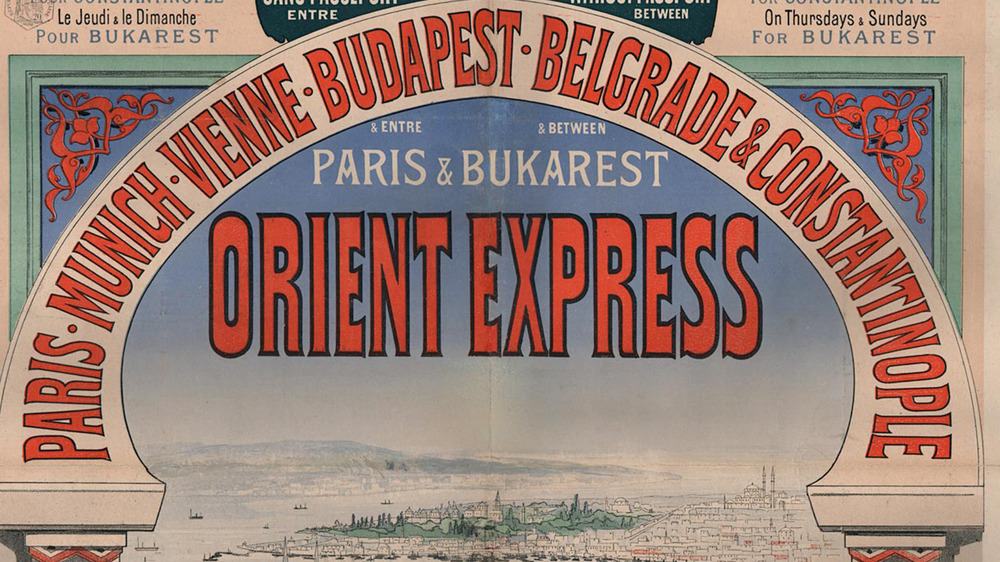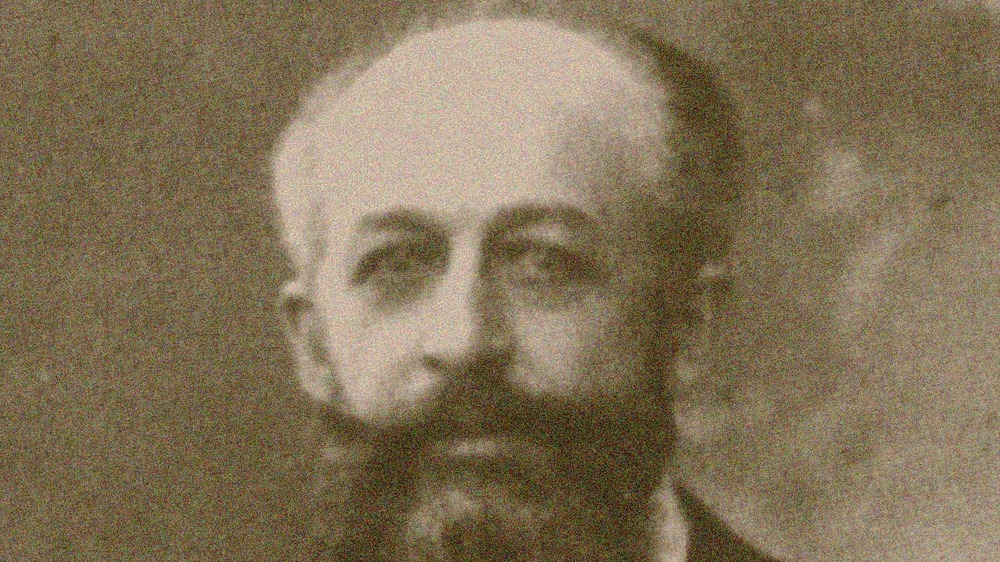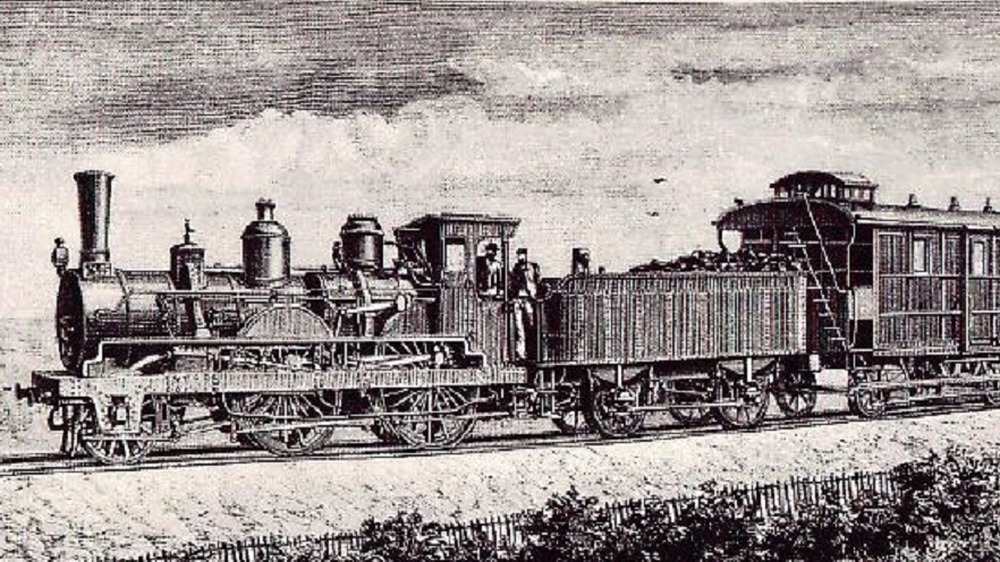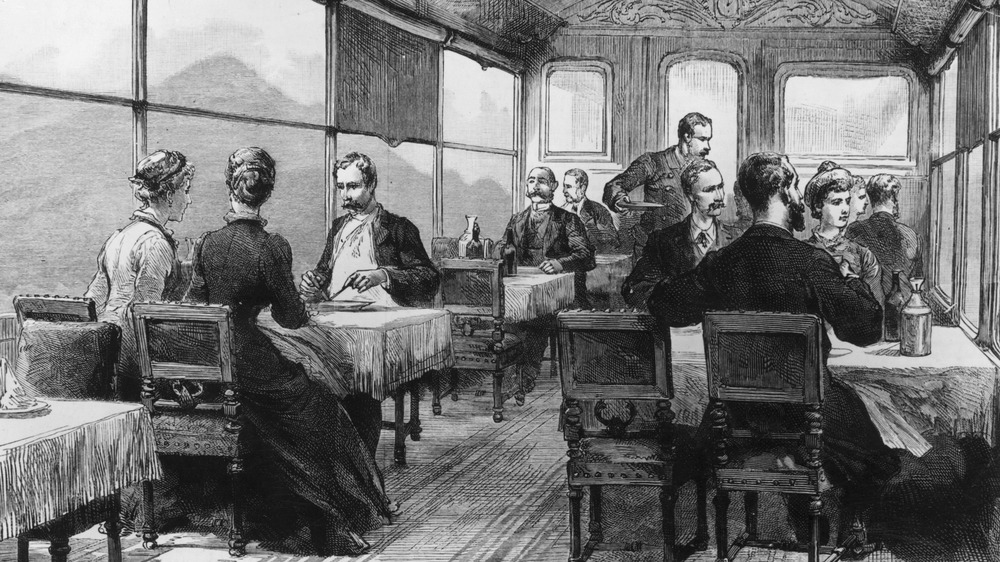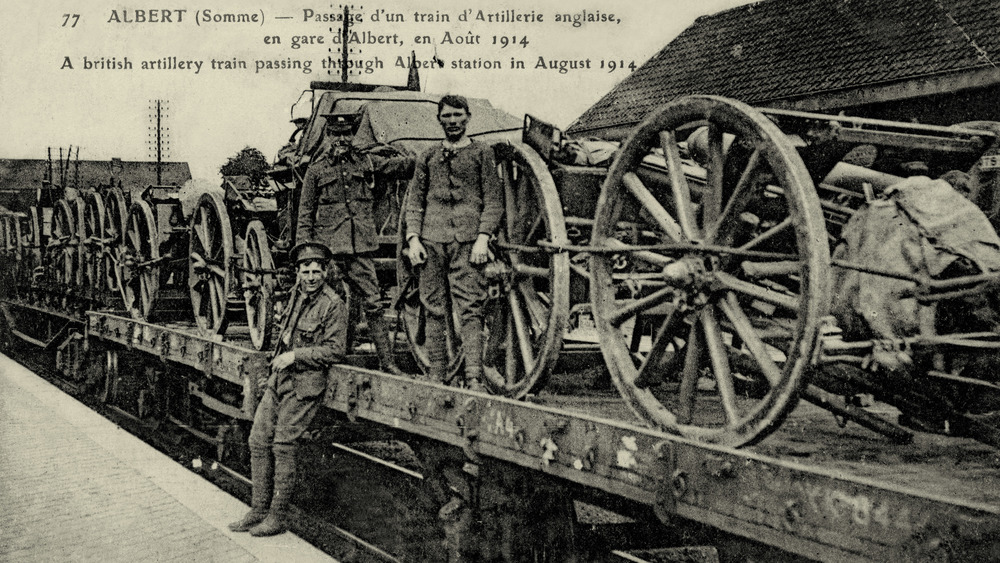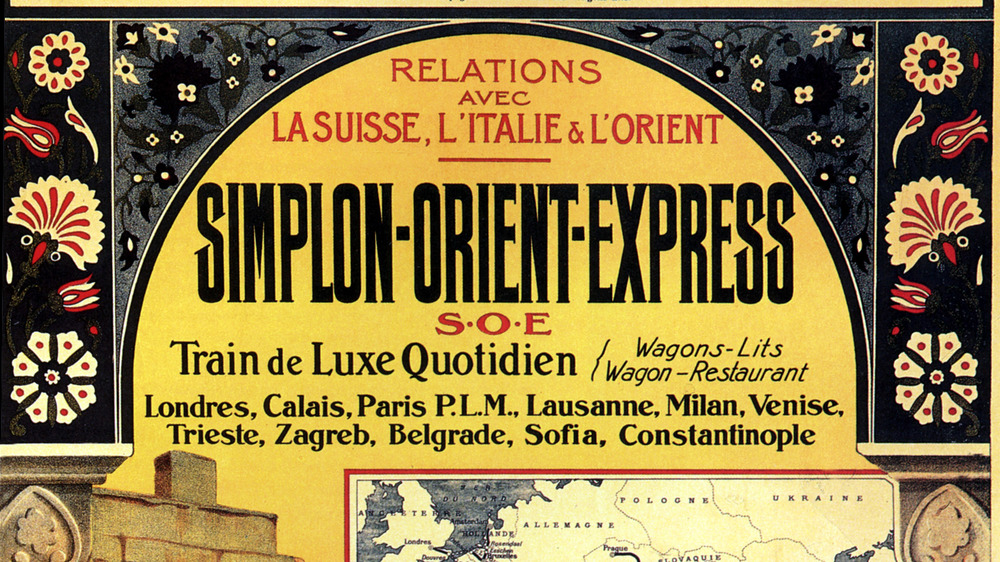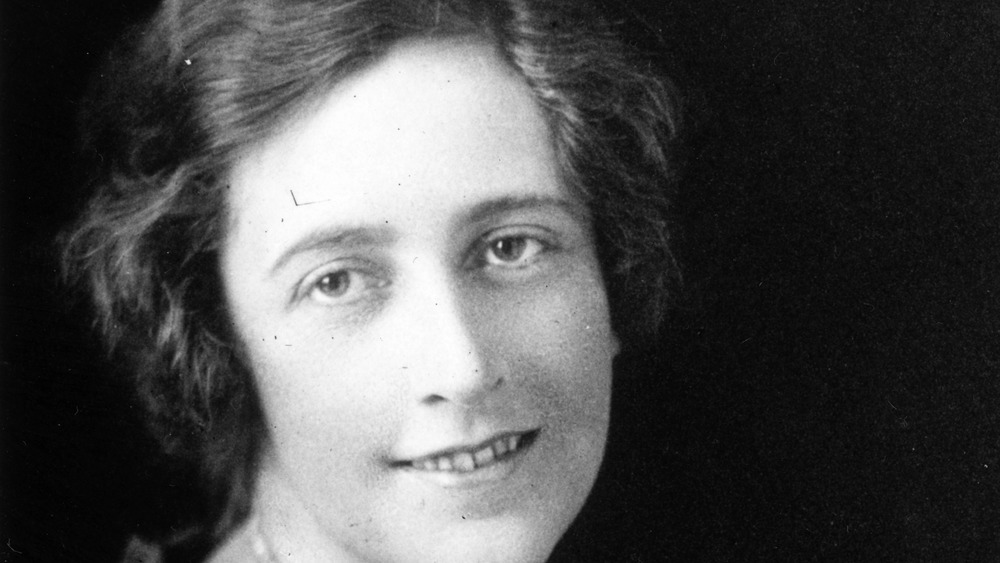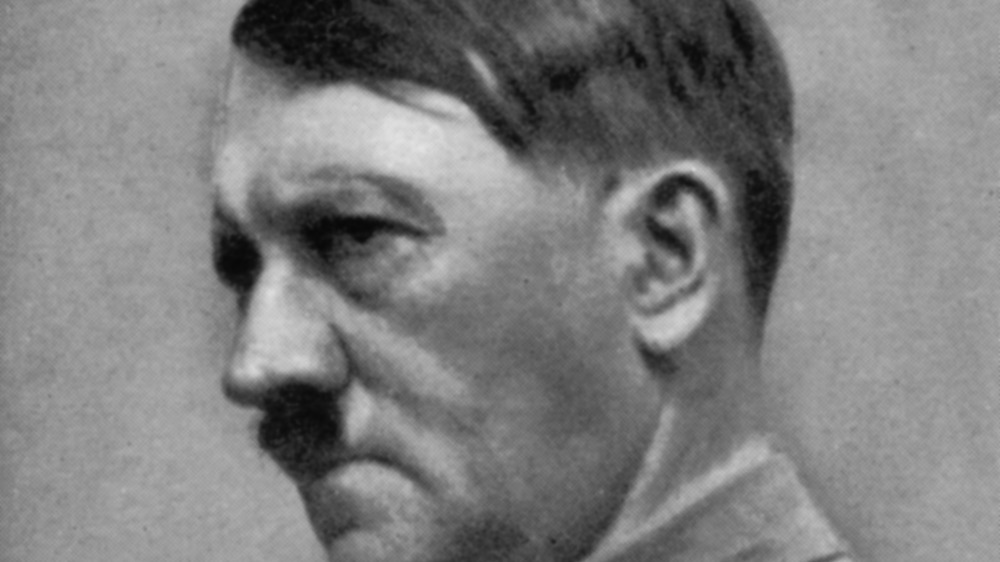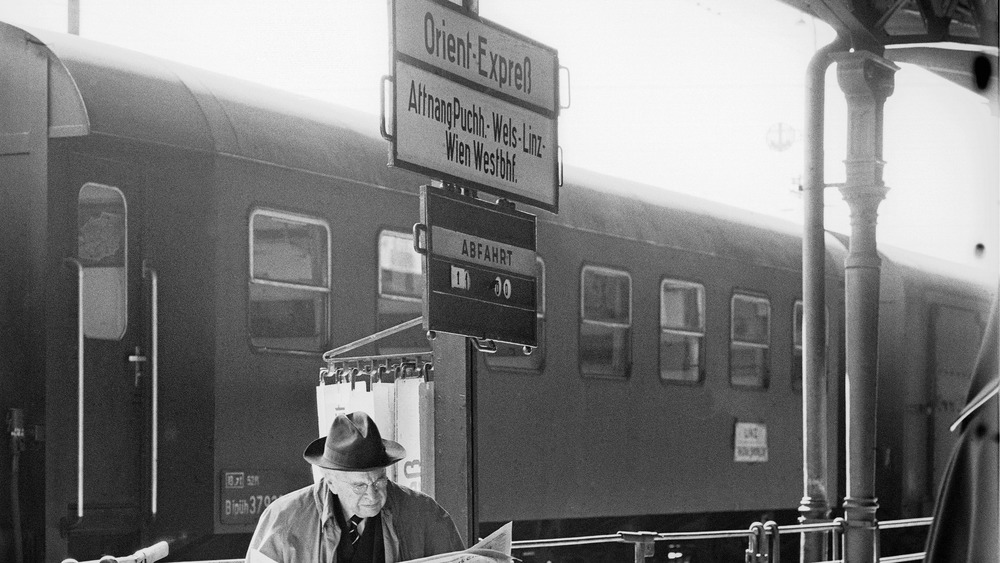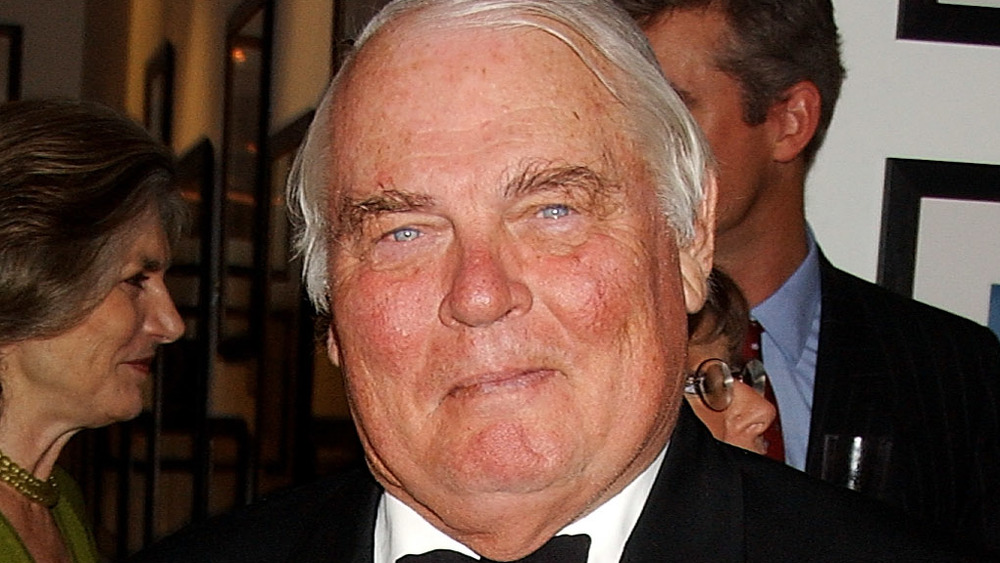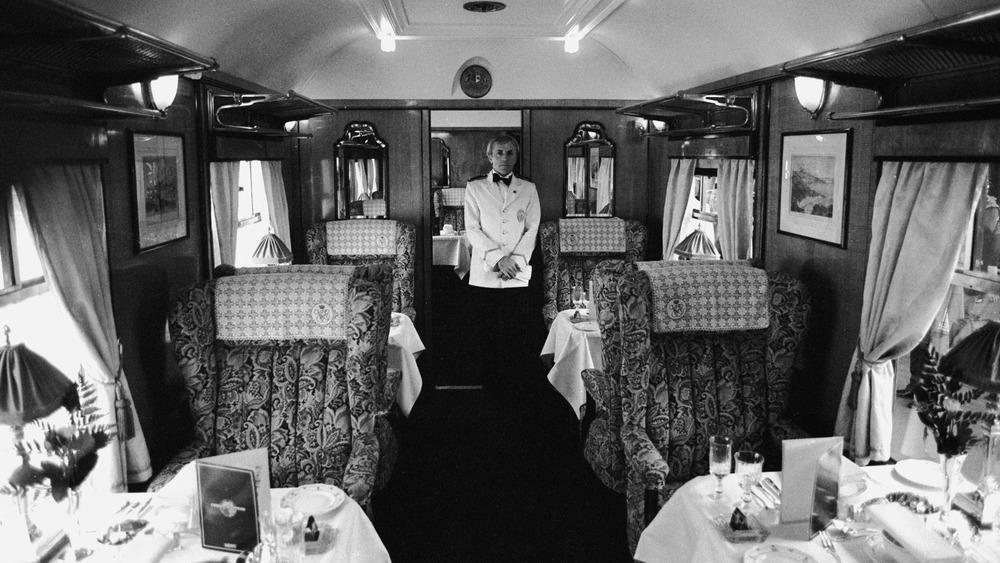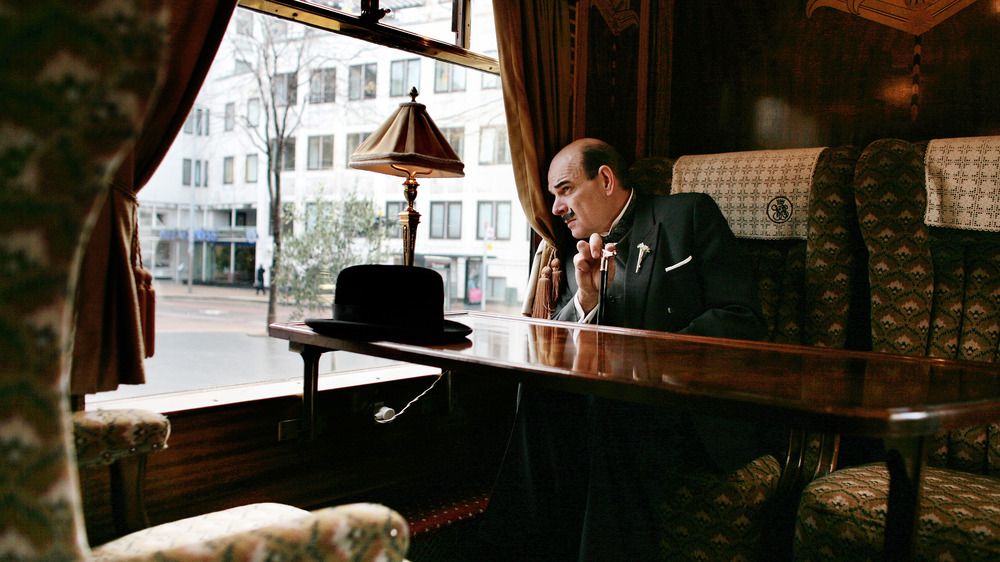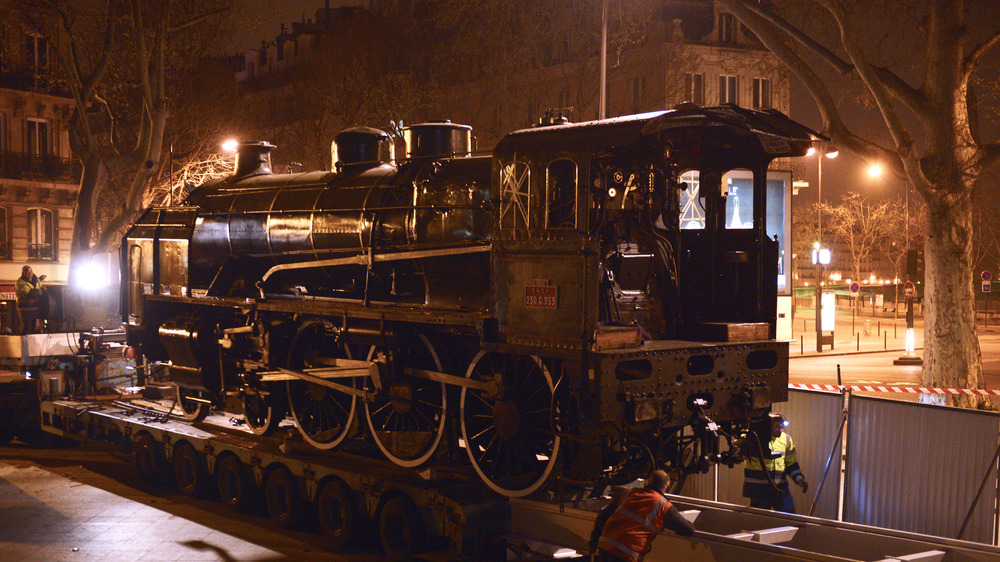The Lasting Legacy Of The Orient Express
The mystique and grandeur of the Orient Express has been tantalizing travelers since 1883. The most luxurious of luxury trains once took passengers from Paris to "the edges of the Orient," an exciting trip for the still primitive Second Industrial Revolution. Although the company has changed hands several times over the years, a ride on the Orient Express has always signified luxury travel, especially in its infancy when train travel could be rough. Over time, anybody who was anybody rode this glorious rail line, from Lawrence of Arabia to Marlene Dietrich, says History.
Why was the Orient Express so special? Britannica explains that this far-from-ordinary train consisted of opulent, state-of-the-art sleeping and salon cars, a restaurant offering world class cuisine, smoking compartments for the gentlemen, and drawing rooms for the ladies. The posh decor included cushy leather armchairs, mahogany paneling along the walls, gorgeous Oriental rugs, velvet drapes, and an ambiance that was beyond compare. "I have never seen anything more remarkable than this odyssey," remarked author Edmond About (per Orient Express) of the inaugural ride in 1883. Indeed, a ride on the Orient Express was a ride to be remembered. Read on for an enjoyable trip along the history of this magnificent train.
The Orient Express, brainchild of Georges Nagelmackers
The Belgian son of a prominent banker, says Smithsonian, Georges Nagelmackers began dreaming of an unsurpassed luxury train as early as 1865. Ideally, the train would be able to travel over an entire continent, which author H. Cookridge described as "running on a continuous ribbon of metal for more than 1,500 miles." But such a rail line would take some serious research, including a trip to America to see engineer George Pullman's fabulous sleeper cars, which allowed passengers to spend the night comfortably en route to their destinations. Also of note were Pullman's Palace cars, which included moveable, comfortable furnishings made to look like a living room parlor of the day.
After several years of perfecting his dream, Nagelmackers invited his friends to take a ride on what he called his "Train Eclair de Luxe" in 1882. New Historian documents the train as leaving Paris on October 10 and arriving in Vienna the next day, a journey of about 140 miles. Although Nagelmackers' first train was merely a prototype, Book of Days Tales points out that there were four sleeping cars with a total of 58 beds aboard, as well as a restaurant coach offering an expansive menu of "oysters, soup with Italian pasta, turbot with green sauce, chicken 'à la chasseur,' fillet of beef with 'château' potatoes, 'chaud-froid' of game animals, lettuce, chocolate pudding," and a pleasing "buffet of desserts."
The debut of the Express d'Orient
Georges Nagelmackers' inaugural trip was a screaming success among his peers. The businessman renamed his grand train the "Express d'Orient." But the hardest part, according to Smithsonian, was finding money and negotiating with railway companies for Nagelmackers' Compagnie Internationale des Wagons-Lits (International Company of Sleeper Cars). Upon negotiating for an established route, which began in Paris and ended with a ferry and wagon to Constantinople (today's Istanbul), Nagelmackers put the finishing touches on his train cars with fine furnishings and beds covered with silk sheets and wool blankets. Atlas Obscura quotes Henri Opper de Blowitz as describing the lush dining car with "bright-white tablecloths and napkins, artistically and coquettishly folded by the sommeliers, the glittering glasses, the ruby red and topaz white wine, the crystal-clear water decanters and the silver capsules of the champagne bottles."
With everything in place, Nagelmackers made out a select guest list of 30 people, which included journalists, diplomats, and railway directors who would write about or tell others of their unique experience. Stories differ on what date the new train set out, but it was sometime in the summer or fall of 1883 and, according to New Historian, ran from Paris to Vienna before passengers disembarked for the rest of the journey. New Book of Days Tales clarifies that the train traveled through Gare de l'Est and Giurgiu in Romania via Munich before reaching Vienna. Soon, says Seat 61, the Express d'Orient was running twice a week.
Express d'Orient officially becomes the Orient Express
By the mid-1880's, says Seat 61, riding on the Express d'Orient was becoming all the rage among the wealthy. Bear in mind that middle- and low-income train passengers had no place here. History says the average ticket cost "a quarter of an average Frenchman's annual income." Not until 1888, says Atlas Obscura, were riders able to ride the Express d'Orient all the way through to Constantinople, a total of around 1,700 miles. Georges Nagelmackers would eventually add, change, or discontinue certain routes over the years, but the luxurious sleepers and amenities never changed.
When the popularity of the Express d'Orient hit the United States circa 1891, Americans read with interest about famous figures like Prince William and others riding the train, which is likely why the name was translated to the "Orient Express" known today. Smithsonian lists others on the "King of Trains" — Czar Nicholas II, who demanded special cars built to suit him; Ferdinand of Bulgaria, who locked himself in a bathroom amidst fears of being assassinated; French President Paul Deschanel, who actually fell off one of the cars one night; and King Leopold II of Belgium, who planned to infiltrate some Turkish man's harem. But Naglemackers' dream child remained a rolling success well into the 1900's. In 1909, all new sleepers and restaurant cars were installed. Sleeper cars now included an upper berth that could be folded away, as well as better suspension for a more comfortable ride.
World War I and the Orient Express
In 1914, the onset of World War I changed the travel industry drastically. As Atlas Obscura puts it, the war "brought an abrupt end to a period of prosperity, cosmopolitism and cultural blossoming." Instead train service, according to Network Rail, was relegated to transporting troops and the necessary items they needed such as coal, rations, and water. The fancy Orient Express waned slightly, save for the days when it was known as the "Spies' Express." Smithsonian explains that various secret agents found traveling on the Orient Express not only made their jobs easier but also more comfortable.
With the Orient Express services suspended beginning in July, the Germans tried to run a competing train service from Berlin to Constantinople called the "Balkanzug," according to Seat 61. The effort was unsuccessful. And although the Orient Express shut down, says We Build Value, plans were in the making for a new route, the Simplon Orient Express, which would travel through Lausanne in Switzerland, also making stops in Milan and Venice before its final stop at Trieste in Italy. Notably too is that when German officers signed a "surrender" document in 1918, according to Mulberry Travel, they did so in a Wagons-Lits train car, which had been used as a mobile office.
The Orient Express gets back on track
The Orient Express resumed operations in 1919 as a preferred form of transportation, with popular trips between Paris and Vienna (and avoiding Germany by passing through Austria says Seat 61). Meanwhile, the Simplon Orient Express ran south from Paris through Lausanne, Milan, Venice, Trieste, Beldgrade and, beginning in 1920, Constantinople. The Orient Express was once again a defining symbol of luxury, attracting a slew of interesting people. Country Life maintains that not only did European aristocrats board the train, but famous writers favored riding the rails too. The Orient Express had indeed become the place to see and be seen.
The Orient Express gradually added more routes. Beginning in 1922, the old wooden sleeper cars started being replaced with steel sleeping cars. The new cars were decked out in blue paint with gold highlights and lettering. When the old dining cars were replaced starting in 1925, they received the same treatment with their signature lavish decor. Great Rail recognizes the roaring 1920's as a time of much debauchery, with "scandalised princes, ambassadors, writers, composers and artists" boarding for the ride. They ate well — a 1925 menu (per Pinterest) offers Oeufs Frits Catalane (eggs with tomato and onion), Tournedos Bearnaise (beef tenderloin with Béarnaise sauce), Pommes Noisette (fried balls of potatoes), Asperges sauce Gribich (asparagus with sauce), Terrine de Canard Truffe (Pate), Glace Plobiere (fancy ice cream), and desserts.
Murder on the Orient Express
In 1929, says Seat 61, the Orient Express was stranded for five days during a snowstorm. Around the same time, author Graham Greene wrote Stamboul Train, a murder mystery that takes place on the train's Ostend Vienna route. Green's work has long been overshadowed, however, by Agatha Christie's 1934 novel, Murder on the Orient Express. Author Agatha Christie (pictured) did not base her story on an actual murder on the train. She later said her story was actually fueled by the 1932 Lindbergh Kidnapping but also that the train being stranded inspired her setting. Ironically, the first known murder on the Orient Express happened in 1935 (per Atlas Obscura).
Four years after Murder on the Orient Express debuted, director Alfred Hitchcock jumped on the bandwagon with his 1938 movie, The Lady Vanishes, about a young woman who realizes an elderly passenger on the Orient Express is missing. The train also remained an intriguing aspect of other works, including Ian Fleming's 1957 novel, From Russia with Love, which the James Bond website confirms was made into a film in 1963. Yet it is Christie's story that remains so enduring, and there are several movies and television shows upon which it is based. Internet Movie Database lists film versions of the book, which came out in 1974, 1999, and 2017, with a mini-series being produced in 2015.
A world war intervenes again
With the start of World War II in 1939, the Orient Express was forced to stop running yet again, according to Luxury Trains. Most other train services stopped as well, and when Germany once again attempted to run a train company called Mitropa that was similar to the Orient Express, Seat 61 says it failed. Adding insult to injury was the Orient Express car on which the Germans signed their "surrender" document back in 1919, which had been on display in Paris since the end of World War I. Smithsonian says Adolph Hitler had it taken from its honorary spot in 1940 and ordered it to be blown up as a means of preventing France and its allies from enjoying their "trophy."
After the war, the Orient Express was revived once again, with its fancy sleeper and dining cars interspersed with "ordinary" passenger cars. But the sleepers were often left unused due to closed borders. Atlas Obscura also confirms that many of the luxurious original cars were lost. Trains World Expresses says the surviving steel cars resembled heroic old battleships — yet still managed to offer upper class French cuisine dishes of salmon and soufflé.
But folks rarely traveled in such style anymore, and History Daily submits that commercial airplanes might have had something to do with the decrease in train travel. The sleeper cars slowly disappeared as various borders reopened after the war — and others closed.
The Orient Express is forced to downsize
By the late 1940's, according to Love Exploring, plane travel was becoming extremely popular for those wishing to get from place to place more quickly. Pan Am, Boeing, and TWA were among those flight companies to offer comfortable and quick transportation. Agatha Christie says the days of trains speeding from west to east and back again simply fell to the wayside as an option for budget-minded travelers. The Simplon Orient Express remained in operation, but one passenger, says Smithsonian, was disappointed to find the train "rather shabby, crowded and cheap," a virtual "roving tenement." In time, the original grand cars were occasionally replaced with conventional seating and dining cars that were nothing like the Orient Express everyone once knew and loved.
Another issue for the Orient Express was the closing of various borders. The company struggled to provide service to Constantinople and its other well-known destinations but was quite taken aback when other train companies began advertising their own services under the Orient Express name as they snatched up the Wagons-Lits Company's cars, says Seat 61. When Life magazine writer Jack Birns took a photographic trip aboard the Orient Express in 1950, he found the train consisted of nicely furnished Pullman cars. And in 1962, the Simplon Orient Express was replaced by the much slower Direct Orient Express. Nine years later, the once extravagant train withdrew its sleeper cars altogether.
The end of the original Orient Express
Luxury Trains puts it most succinctly — less expensive and faster modes of travel were the "nail in the coffin" for the once wonderful Orient Express. Gone were the days when riding the rails in an elegantly appointed train car was something special. Almost all services ended in 1977, the one exception being a run from Bucharest in Romania, says Independent. But even that train was not the original by any means, says Seat 61. Even the last holdout of the original service, the Direct-Orient Express, ceased operations. The last run from Paris to Istanbul left the station on May 20, 1977. Only a knock-off Orient Express ran between Paris and Vienna but used Austrian and French cars, which had nothing to do with the original company.
Thankfully, an American shipping container businessman named James B. Sherwood (pictured) discovered a number of original Orient Express cars that were not only intact but were being auctioned by Sothebys, according to Agatha Christie. The innovative Sherwood snatched them up, began renovating them, and made plans to bring the historic Orient Express back to life. Sherwood is to thank for not only reviving the original Orient Express but also building a linked chain of elite hotels in London and elsewhere.
The Orient Express makes yet another comeback
Although the Direct-Orient Express ceased operating in 1982, James Sherwood's revived service, the Venice Simplon-Orient-Express, began running from London and Paris to Venice. Seat 61, however, notes the train was very expensive to ride. Notably, however, passengers rode in the Pullman cars of the 1920's and 30's, but sleeping accommodations were available in the 1929 Wagons-Lits sleepers. The service was once again upper class, although financial analysts called the project "Sherwood's toy box." But the entrepreneur himself was soon welcomed into high society across the world.
Britannica explains that Sherwood's Venice Simplon-Orient-Express included not just one but several routes between London and Venice. It became the only run once the tri-weekly sleeping car to Bucharest ceased in 1991. Still, the Paris run still included sleeping cars, passenger cars, and restaurant cars. And, the Bucharest run began again in 1998 under Romanian Railways with a modern-built sleeping car. Thus the Venice Simplon-Orient-Express, or VSOE for short, remained a true "hidden jewel" with gloved stewards in replicated uniforms waving folks aboard to enjoy lavishly decorated surroundings and the best in "culinary sophistication."
Will the real Orient Express please roll by?
One would think that James Sherwood's revival of the original Orient Express cars would be the end of this story, but no. Seat 61 verifies that in 2001, Orient Express service (the replicated one, not Sherwood's) withdrew from the Paris to Budapest and Bucharest routes. Six years later other routes ceased as well, leaving only the Strasburg to Vienna route, which was still called the "Orient Express." Confused yet? Don't be. The Strasburg to Vienna route, says the Independent, was actually just another "high-speed rail" along the original Orient Express tracks. The Paris to Strasbourg route was officially done with as well, which led John Potter of the Thomas Cook Continental Timetable to opine that closure of the Orient Express routes was "inevitable."
By 2009, only one other Orient Express route survived besides Sherwood's, and that was the "much-truncated" run from Strasbourg to Vienna. That train pulled out the station for the last time in December. Even noted travel guide Rick Steves of PBS told NPR that in its day, the train was "the practical way you get across the Balkans," also that during the Cold War of 1985-1991, he remembered fondly that "everybody with a briefcase looked mysterious to me, anybody with an overcoat — what's under that overcoat? And of course, it was that mystique of going east." But those memories faded with the final run of 2009.
James Sherwood's Orient Express survives today
Today history buffs who still appreciate the finest in train service can still hop aboard the Belmond Ltd.'s Venice Simplon-Orient-Express owned by James Sherwood. Riders are treated to every bit of historic ambience Belmond can muster, from the 1920's cars that are "rich with craftsmanship" to " exceptional artisanal cuisine." Both cabins and grand suites are available and provide robes and slippers and all the ambience you can handle (except private bathrooms). Depending on how long you want to make your trip, the price ranges from just over $5,000 USD all the way up to $30,000! But hey, meals are included. Cocktails are an additional charge. Is it worth it? Writer Cecilia Pelloux (via Forbes) fondly called the train "synonym of quality, exclusive and glamour and of course a chance to relive the golden age of travel."
James B. Sherwood unfortunately died in 2020, but his "revival empire" remains a most tangible memory to fans of the historic Orient Express. And if you can't afford a ride, the Thessaloniki Railway Museum in Greece has one of the original dining cars on display. Built in England in 1900, this car ran the route from Paris to Istanbul. Alternatively, you can check out the James Bond "From Russia with Love" video game which premiered in 2005.
